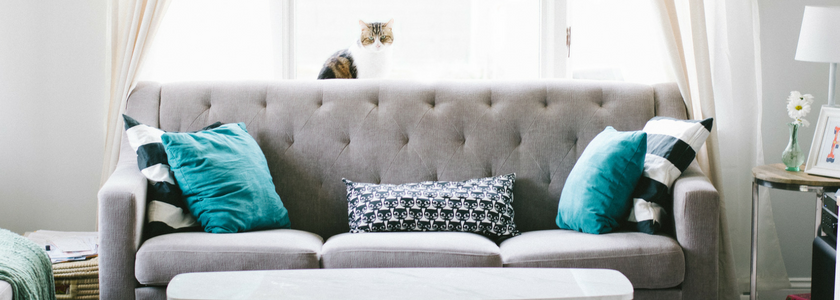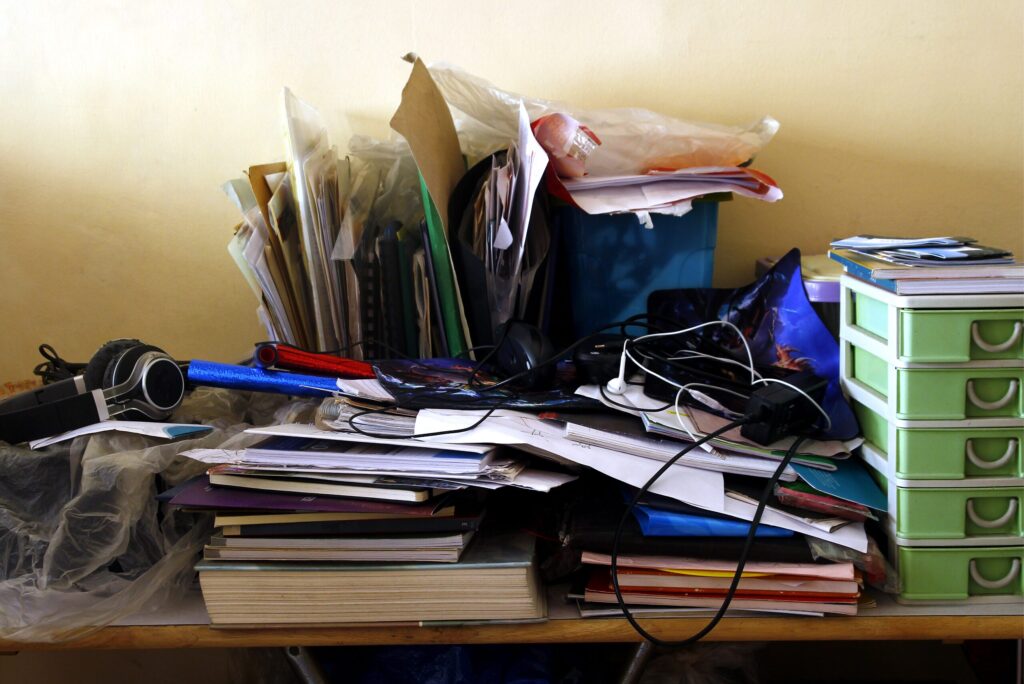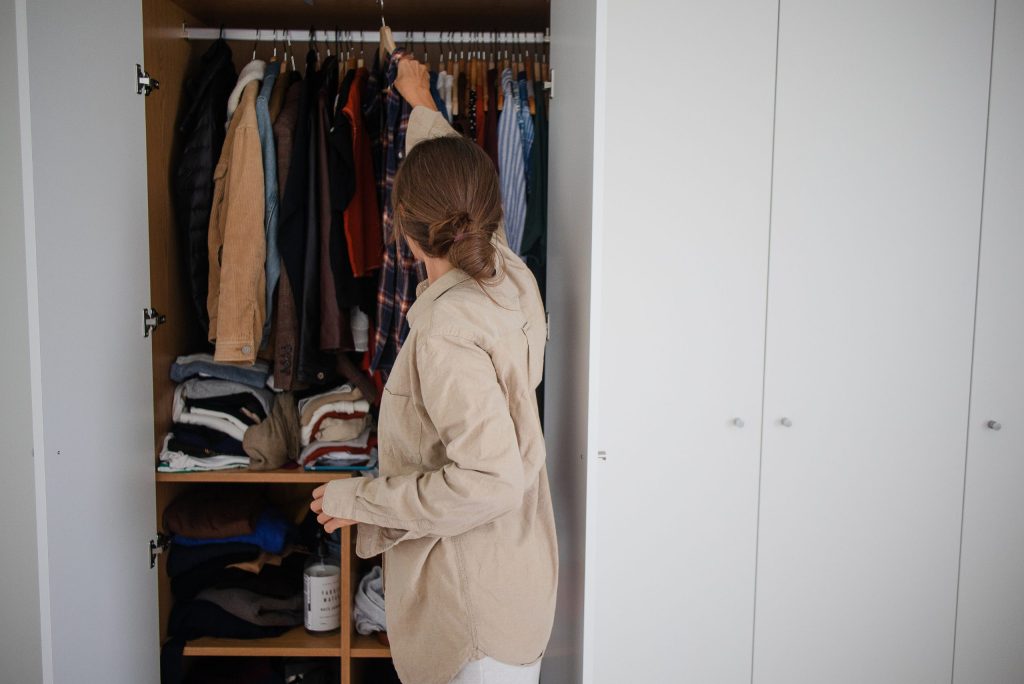What to Do When Picking up and Putting Away Isn’t Keeping You Organized

In this post, I will discuss some things to do when picking up and putting away isn’t keeping you organized.
Picking up and putting away is different from decluttering and organizing. When the amount of stuff surrounding you causes overwhelm and makes you feel like you have no idea where to start, it can be immobilizing. It can even feel defeating, especially when this is a repeat pattern for you and perhaps others who share the same four walls. It’s time to break the cycle.
Have you ever thought to yourself, while surveying your cluttered space, once again, if you could just find a place for all the stuff it would be so much easier? You would pick it all up and put it away if only you knew where to put it all. You thought you were finally organized. Somehow the clutter just seems to keep coming back.
Aaghhh! So, frustrating!
Eventually, it can become the more simple tasks of picking up and putting away. To get to this stage of zen, it’s helpful to realize this a journey and not “one and done” when it comes to sustaining order.
It is completely within your power and you have what it takes to get there. I promise. Here are some guideposts to lead you on your journey.
1. Start with the end in mind
This step is vital so don’t skip over it. Just as you would consult a map or punch in an address on your GPS when driving someplace unfamiliar, take pause to consider your desired result at the end of this organizing process.
Living in an uncluttered and organized way is an ongoing, continual process that you ultimately blend into your way of life. Keeping your target in mind can help motivate you.
I encourage you to write your vision and refer to it often as you go. Consider it as a working document. Using the analogy above of driving to a new destination, imagine you encounter some traffic. You might decide to take a different road to avoid it. You’ll still arrive at your desired destination, it may have just taken a little longer. The same concept can apply to your organizing journey.
What counts is that you have a clear idea of what you want your result to look like. Don’t worry about how you’re going to get there just yet. The “how” will happen, just trust me on this one. You’re not looking for perfection, you’re looking for progress.
2. Begin with baby steps
 Photo by Alex McIl on Unsplash
Photo by Alex McIl on Unsplash
If you’re feeling overwhelmed you might be perplexed on how to even start. You’ve most likely heard the expression that to eat an elephant it takes one bite at a time, right?
Now that you’ve taken some time to visualize you can start breaking down what you need to do into manageable, bite-sized pieces. Then, prioritize them.
Can you identify something that would be easy for you to tackle first?
As an example, let’s say every horizontal surface has so much stuff on it that you can’t even see the top. Try selecting a small surface to start, such as a side table, and see if you could clear that off. The aim here is to make it easy to take some important action, however small.
3. Involve and collaborate with others in what you are doing
If your chosen project area is being utilized by other people, having their agreement and chance to be heard can go a long way towards making for an ideal outcome. Talk with them about your ideas and be willing to listen to theirs as well. Strive for collaboration and mutual understanding.
Although you may feel an overwhelm and urgent need to get things in order, others may not be in the same place you are yet. It’s important to try to understand how other people are thinking and feeling in shared spaces.
Don’t let discussions dissolve into arguments and nagging, which may end up standing in your way of starting or moving forward. Has arguing about disorganization become a convenient form of procrastination?
4. Plan and rank tasks. Put pen to paper and write it down
Studies have shown physically writing down your goals actually increases your chances of achieving them. According to an article I read which cited research conducted by Dr. Gail Matthews at Dominica University, the act of writing down your goals can increase your chance of success by 44%.
It’s most effective to use good old-fashioned pen and paper than tapping them out in digital format. If you want to, you can always transfer it to digital later.
Try this method: Write tasks on sticky notes, one per note. Lay them out on a board, wall, or flat surface. Categorize and move the notes up or down to tease out the priority. If priorities change, as they often do, it’s easy to move the sticky notes around, write new tasks as they arise, or get rid of a note if it becomes irrelevant.
5. Be realistic about what you can do within a given timeframe
One thing that can happen is we overestimate what we can carry out within a set time allotment. It’s very common for most of us, so don’t beat yourself up when you feel like your task is taking forever. People are generally not that good at estimating how long things will take.
When I work with clients, we will estimate how long we think a given task will take to complete. Then, I’ll suggest that we double that, or even triple it.
It almost always takes longer than we think. One great side effect of working in regular focused blocks of time is that you can measure how much you got done. Say you worked on your pantry for 25 minutes and you managed to declutter two shelves out of five. Now, you’ve got a more realistic idea of how long the rest is going to take you, backed by data.
I use The Pomodoro Technique with my clients. Check out how to do it here.
6. Practice acknowledging thoughts, feelings, and limiting ideas that are holding you back
For the longest time, I had some things tucked away in a hope chest that reminded me of a painful past relationship. I very rarely opened the hope chest because when I did, I would see something that caused the painful memories to surface.
Finally one day I decided to empty out the hope chest because I had come to a point where I could acknowledge my feelings. I realized that keeping those items weren’t benefitting me in any way, that I had moved on, and was happy now. I filled up a trash bag and put the rest in the donation pile. Now I have a lovely place to store off-season bedding. Win!
[coupon couponid=”610″ coupon_align=”cctor_aligncenter” name=”25-off-alacarte-halfday”]
If you are holding on to things that bring negative associations to your life, there is no law that says you have to keep them. Enlist your support buddy, if needed and let those go. You deserve happiness. It may still be difficult to do, and that’s okay. You are resilient.
7. Block time in your calendar to do decluttering and organizing
Set aside time in your calendar and block it off just as you would any other appointment. You can plan a few dates at a time to keep you on track. Before long, it will become second nature and part of your routine. Respect your own time and keep that appointment with yourself.
I have a basket in my closet where donations go and I will regularly go through my things in the house and weed out what I don’t need or want any longer. My family knows where the basket is too, and they naturally started using it for stuff they wanted to give. On a regular basis, I schedule a pick-up in my calendar or take it to the donation center.
8. Ask for help, even if it’s difficult or uncomfortable to do so
Like a lot of people, this one is hard for me. Even if the space that you’re decluttering and organizing is yours alone, it’s often a good idea to involve others in what you are doing. Having moral support is key, especially when you hit something that might be difficult to deal with, you hit a roadblock, or uncomfortable emotions start to well up.
Choose someone who will be supportive, but also realistic, and will help you be accountable. This could be your spouse, a friend, or you could hire someone to help. If you don’t have anyone close by, you can still talk via phone or video chat.
Get help decluttering and organizing
9. Be mindful and thoughtful about what you allow into your space
Limit and edit what you are bringing in. This is one area where many of us falter. Wares are always coming into our homes, even when we are mindful of what’s coming in. The key is to recognize contributing behaviors such as impulse buying and saying yes to freebies. Try to curb those while building up habits to plan when making purchases.
When you do bring something in, create and support the balance by removing one or more items.
10. Celebrate small accomplishments
Don’t forget to celebrate the small wins. I am not always the best at this when it comes to myself, but it’s important. Did you spend a few minutes on that cluttered tabletop and now you can see your progress shining back at you? Sweet! Do your happy dance, even if it does feel a little strange.
Which one of the 10 tips about picking up and putting away struck a chord in you? Comment below:


